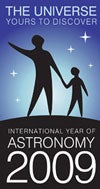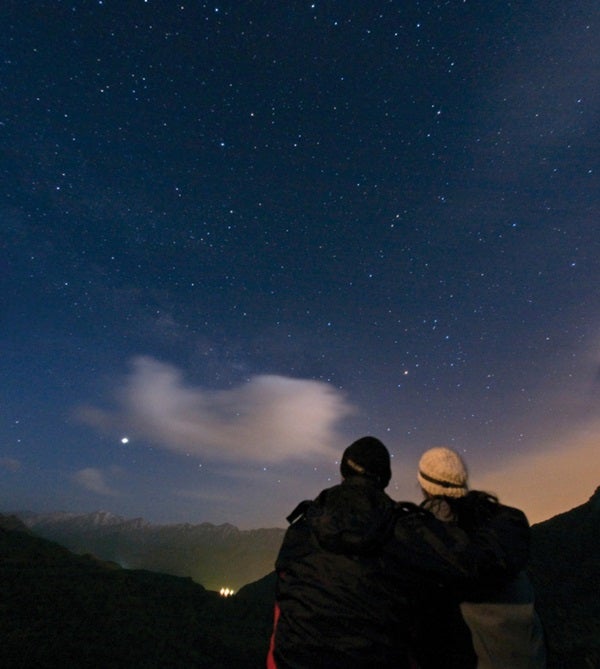With 2009 just over the horizon, stargazers around the world are busy preparing for the International Year of Astronomy. A staggering 135 nations are collaborating to bring the universe closer to Earth. Events and activities will take place over the coming 365 days and beyond in a spectacle of cosmic proportions.
The International Year of Astronomy 2009 (IYA2009) has been launched by the International Astronomical Union (IAU) and the United Nations Educational, Scientific and Cultural Organization (UNESCO) under the theme, “The Universe, yours to discover.” Thousands of IYA2009 events are described on the national websites, as well as on www.astronomy2009.org, and a few of the global projects are listed here.
The official IYA2009 opening ceremony will take place in Paris on January 15-16, 2009. It will feature keynote speakers, including nobel laureates, and live video feeds to scientists working in remote locations. Many nations are holding their own opening ceremonies in January and February, showing their dedication to the year. But events will begin before then. Don’t be surprised to see telescopes on the streets on New Year’s Day. The IYA2009 Solar Physics Group has been busy planning a grand worldwide campaign with over 30 countries involved at more than 150 venues.
“The Cosmic Diary” is an example of a global activity occurring during 2009, with the release of its official web site on New Year’s Day. The project concerns the daily lives of full-time astronomers. More than 50 bloggers, professionals from over 35 countries and employed by organizations such as ESO, NASA, ESA, and JAXA have already begun producing content, writing about their lives, the work they conduct, and the challenges they face. The public can see what being an astronomer is really like and how groundbreaking research is conducted. Another project, “365 Days of Astronomy,” will publish one podcast per day over the entire year. The episodes will be written, recorded, and produced by people around the world.
The “From Earth to the Universe” (FETTU) cornerstone project is an exhibition arranged by IYA2009 that will bring large-scale astronomical images to a wide public audience in non-traditional venues such as public parks and gardens, art museums, shopping malls, and metro stations. Over 30 countries around the world are currently in the development phase of FETTU projects, many with multiple locations. Some 15 countries plan to begin FETTU exhibitions within the first month of 2009, ranging in size from 25 to over 100 images on display. FETTU will be introduced to the global community at the opening ceremony at UNESCO headquarters in January 2009.
“The World at Night” is an IYA2009 special project that is producing and bringing to the public a collection of stunning photographs and time-lapse videos of the world’s landmarks with the sky in the background. “The World at Night” is preparing more than 30 exhibitions and educational events around the world.
One of IYA2009’s aims is to raise awareness of light pollution and how the beauty of the night sky is progressively being drowned out, particularly over urban areas. The project “Dark Skies Awareness” is tackling these issues head-on in a practical, inclusive manner. One way in which it is doing this is by holding star-counting events where the public is encouraged to see how many stars in a particular area of the sky are actually visible from their location. When compared with data from truly dark sites, the results are often very surprising! The “How Many Stars” event will run from January 2009.
A list of event highlights is available on the official IYA2009 website, www.astronomy2009.org/highlights. From there it is also possible to contact the National Nodes, responsible for organizing local events in the many participating countries.
IYA2009 seeks to involve the public in its activities, and to this end amateur astronomers have been called upon to help organize and run events. So many people across the globe are already involved, they have formed the world’s largest astronomy network. Catherine Cesarsky, IAU President, says: “135 countries have committed themselves to the Year, all pulling together toward the common aim of making astronomy accessible to the public. IYA2009 will reinforce the links between science education and science careers, stimulating a long-term increase in student enrolment in the fields of science and technology and an appreciation for lifelong learning.”











